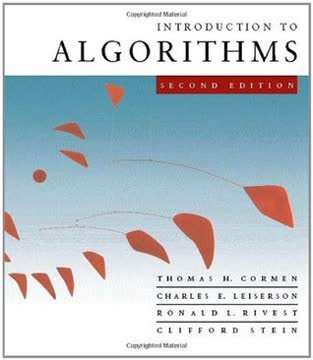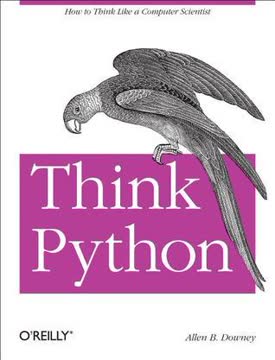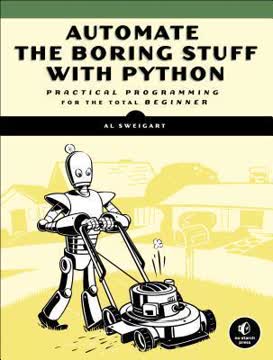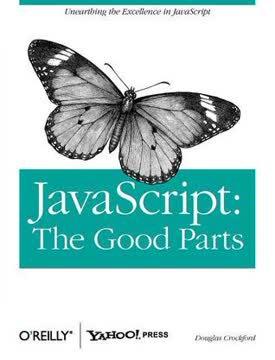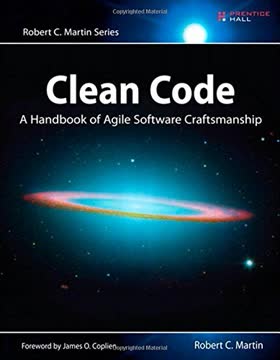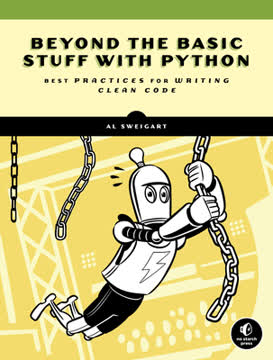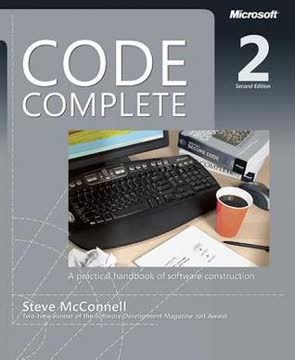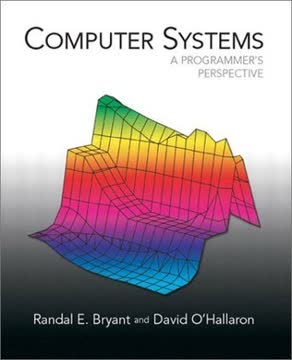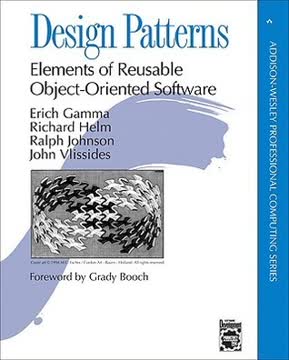重点摘要
1. Python的核心数据类型:数字、字符串、列表和字典
内置对象使程序编写变得简单。
多功能的构建模块。 Python的核心数据类型为编程提供了坚实的基础。数字支持数学运算,而字符串处理文本。列表提供有序的项目集合,字典提供键值映射。这些类型可以是可变的或不可变的,影响它们的修改方式。
强大的操作。 每种类型都有一组内置操作和方法。例如:
- 字符串:切片、连接,以及split()和join()方法
- 列表:索引、切片、append()和extend()
- 字典:基于键的访问、update()和keys()方法
灵活性和效率。 Python的核心类型设计易于使用和高效。它们可以嵌套以创建复杂的数据结构,许多操作经过优化以提高速度。这种简单性和强大的结合使Python适合广泛的编程任务。
2. Python中的动态类型和引用
名称没有类型,但对象有。
类型灵活性。 Python使用动态类型,这意味着变量可以引用任何类型的对象。这允许更灵活和简洁的代码,因为同一个变量可以在不同时间持有不同类型的数据。然而,这也需要仔细注意以确保操作期间的类型兼容性。
引用模型。 在Python中,变量本质上是指向内存中对象的名称。当你为变量赋值时,你是在创建对对象的引用。这有重要的影响:
- 多个名称可以引用同一个对象
- 可变对象可以就地更改,影响所有引用
- 不可变对象在“修改”时创建新对象
理解这个引用模型对于编写高效且无错误的Python代码至关重要,尤其是在处理函数参数和共享数据结构时。
3. Python的语句语法和结构
块和语句边界是自动检测的。
缩进很重要。 与许多其他语言不同,Python使用缩进来定义代码块。这通过设计强制清晰、可读的代码。冒号(:)用于在复合语句中引入块,如if、for、while和函数定义。
语句类型。 Python提供多种语句类型:
- 赋值语句(=, +=等)
- 条件语句(if, elif, else)
- 循环语句(for, while)
- 函数和类定义(def, class)
- 异常处理(try, except, finally)
简单性和可读性。 Python的语法设计清晰直观。许多在其他语言中需要多行的操作可以在Python中简洁地表达,例如列表推导和条件表达式。
4. Python中的迭代和循环结构
For循环和列表推导通常是完成实际工作的最简单和最快的方法。
强大的迭代工具。 Python提供多种迭代数据的方法:
- 用于序列和其他可迭代对象的for循环
- 基于条件的迭代的while循环
- 用于简洁数据转换的列表推导
- 用于内存高效迭代的生成器表达式
可迭代协议。 Python的迭代模型基于可迭代协议,允许自定义对象可迭代。这种统一的方法意味着许多内置函数和结构可以无缝地与实现协议的用户定义类型一起工作。
效率和可读性。 Python中的迭代设计既高效又易于阅读。例如,列表推导可以用一行表达性代码替换多行for循环。内置的range()、enumerate()和zip()函数进一步增强了Python迭代工具的强大和灵活性。
5. 函数:Python中可重用的代码块
函数是Python提供的最大化代码重用和最小化代码冗余的最基本程序结构。
模块化代码组织。 Python中的函数允许你封装可重用的代码片段。这促进了:
- 代码重用和冗余减少
- 更容易的维护和调试
- 改进的可读性和组织
灵活的参数。 Python函数支持多种参数类型:
- 位置参数
- 关键字参数
- 默认参数值
- 可变长度参数列表(*args, **kwargs)
返回值和副作用。 函数可以使用return语句显式返回值,或隐式返回None。它们还可以通过修改可变对象或全局变量产生副作用。理解返回值和副作用之间的区别对于编写清晰和可预测的代码至关重要。
6. Python中的作用域和命名空间
当你在程序中使用名称时,Python在所谓的命名空间中创建、更改或查找名称——一个名称存在的地方。
LEGB规则。 Python使用LEGB规则进行名称解析:
- 局部:在当前函数中定义的名称
- 闭包:在任何闭包函数的局部作用域中定义的名称
- 全局:在模块顶层定义的名称
- 内置:在内置模块中的名称
名称赋值和global语句。 默认情况下,在函数内部为名称赋值会创建或更改局部变量。global语句允许你在函数作用域内显式处理全局变量。
命名空间的影响。 理解作用域和命名空间对于:
- 避免命名冲突
- 管理变量的生命周期和可见性
- 编写更可维护和模块化的代码
正确使用作用域可以帮助创建更自包含和可重用的函数定义。
7. Python中的模块和代码组织
模块只是变量的包——即命名空间。
代码组织。 Python中的模块是组织大型程序的主要手段:
- 每个.py文件是一个模块
- 模块可以包含变量、函数和类
- 模块可以导入其他模块
命名空间管理。 模块创建单独的命名空间,有助于在大型项目中避免命名冲突。这种模块化方法促进了:
- 代码重用
- 功能的逻辑组织
- 更容易的维护和协作
导入机制。 Python提供灵活的方式来导入和使用模块:
- import module
- from module import name
- from module import *
- import module as alias
理解这些导入机制及其影响对于有效地构建Python程序和管理代码库不同部分之间的依赖关系至关重要。
最后更新日期:
FAQ
What's Learning Python about?
- Comprehensive Guide: Learning Python by Mark Lutz is a detailed introduction to the Python programming language, covering both basic and advanced topics.
- Core Concepts: It focuses on Python's core concepts, including syntax, data types, and object-oriented programming (OOP) principles.
- Practical Approach: The book includes practical examples and exercises to help readers apply concepts in real-world scenarios, making it suitable for both beginners and experienced programmers.
Why should I read Learning Python?
- Authoritative Resource: Written by Mark Lutz, a leading figure in the Python community, the book is well-respected and widely used in educational settings.
- Structured Learning Path: It is organized in a logical progression, starting from basic concepts and gradually introducing more advanced topics, making it suitable for self-study.
- Updated Content: The third edition includes updates on Python 3.x features, ensuring that readers learn the most current practices and tools available in the language.
What are the key takeaways of Learning Python?
- Core Concepts Mastery: Readers will gain a solid understanding of Python's fundamental concepts, including data types, control structures, functions, and modules.
- OOP Principles: The book provides in-depth coverage of object-oriented programming, teaching readers how to design and implement classes and objects.
- Practical Skills Application: Through exercises and examples, readers will learn how to apply their skills in real-world programming tasks, preparing them for actual coding challenges.
What are the best quotes from Learning Python and what do they mean?
- "Python is a language that emphasizes readability.": This highlights Python's design philosophy, prioritizing clear and understandable code for easier collaboration and maintenance.
- "Functions are the most basic way of avoiding code redundancy.": This emphasizes the importance of functions in programming for code reuse and organization.
- "Classes provide new local scopes.": This points out that classes create their own namespaces, helping avoid name clashes and maintain clarity in larger programs.
How does Learning Python approach Object-Oriented Programming?
- In-Depth OOP Coverage: The book dedicates significant sections to explaining OOP concepts such as inheritance, encapsulation, and polymorphism.
- Practical Class Design: Readers learn how to design and implement their own classes, including using special methods for operator overloading.
- Real-World Examples: Numerous examples demonstrate OOP in action, bridging the gap between theory and practice.
What is dynamic typing in Python according to Learning Python?
- No Type Declarations: Variables do not require explicit type declarations; types are determined automatically at runtime based on the objects they reference.
- Flexibility in Coding: This allows for greater flexibility, as variables can reference objects of different types throughout the program's execution.
- Supports Polymorphism: Dynamic typing supports polymorphism, meaning the same operation can be applied to different types of objects, enhancing code reusability.
How do Python lists differ from strings in Learning Python?
- Mutability: Lists are mutable, meaning they can be changed in-place, while strings are immutable and cannot be altered after creation.
- Data Structure: Lists can hold a collection of items of any type, including other lists, whereas strings are specifically sequences of characters.
- Operations: Lists support a variety of operations, such as appending and removing items, while strings support operations like concatenation and slicing.
How does exception handling work in Learning Python?
- try/except Structure: The book explains the try/except structure for catching and handling exceptions, allowing programs to recover from errors gracefully.
- Raising Exceptions: Readers learn how to raise exceptions manually using the raise statement, useful for signaling errors in their own code.
- Using finally for Cleanup: The book discusses using finally clauses to ensure cleanup actions are always performed, critical for resource management.
What is the significance of the import statement in Python according to Learning Python?
- Module Access: The
importstatement allows access to functions, classes, and variables defined in other modules, promoting code reuse and organization. - Namespace Management: Importing a module creates a separate namespace, preventing name collisions between variables in different modules.
- Dynamic Loading: Python modules can be imported dynamically, allowing for flexible program structures where components can be loaded as needed.
How does Learning Python explain the difference between mutable and immutable types?
- Mutable Types: Mutable types, such as lists and dictionaries, can be changed in place, allowing modification without creating a new object.
- Immutable Types: Immutable types, like strings and tuples, cannot be changed once created, with any modification resulting in a new object.
- Impact on Performance: Understanding the difference affects memory management and performance, as mutable types can lead to unintended side effects if not handled carefully.
How do I define and call a function in Python according to Learning Python?
- Defining Functions: Functions are defined using the
defkeyword, followed by the function name and parentheses containing any parameters. - Calling Functions: To call a function, use its name followed by parentheses, passing any required arguments.
- Example: For instance,
def add(a, b): return a + bdefines a function, and callingadd(2, 3)would return5.
How does Learning Python help with debugging?
- Error Messages and Stack Traces: Python provides detailed error messages and stack traces when exceptions occur, aiding in debugging efforts.
- Using try/except for Debugging: Try/except blocks can catch exceptions during development, allowing testing and debugging without terminating the program.
- Testing Frameworks: The book introduces testing frameworks like PyUnit and Doctest, which help automate testing and debugging processes.
评论
《学习Python》评价不一。许多人赞赏其内容全面且清晰,认为对初学者和有经验的程序员都很有价值。然而,也有一些人批评其篇幅过长、内容重复且节奏缓慢。读者们欣赏书中详细的解释和与其他语言的比较,但也有人觉得文字过于冗长且组织不够合理。该书特别提到了Python 2.x与3.x之间的差异。虽然一些人认为这是一本必备的资源,但也有其他人建议采用替代的学习方法或书籍,以便更实用地学习Python编程。
Similar Books

